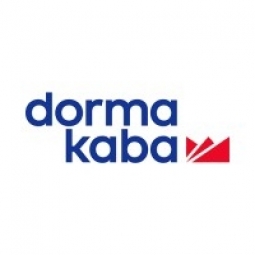Customer Company Size
Large Corporate
Region
- America
Country
- United States
Product
- Not mentioned
Impact Metrics
- Customer Satisfaction
- Productivity Improvements
Applicable Industries
- Education
Applicable Functions
- Human Resources
- Business Operation
About The Customer
Osceola County School District is located in Florida and is one of the largest land masses in the state. The district is home to a diverse population, with nearly half of its residents identifying as Hispanic or Latino. The largest self-reported ancestral group in the county is Puerto Ricans, who account for 25% of the population. The district's main goal is to outperform all other districts in Florida. Despite having a large population of English as a Second Language (ESL) students, the district consistently improves and exceeds every milestone. The district has seven A-rated and three B-rated high schools, a significant improvement from a time when it had a D-rated high school. The district is also socio-economically disadvantaged, with 70% of its students receiving free or reduced lunches.
The Challenge
Osceola County School District, located in Florida, is one of the largest land masses in the state. The district is home to a diverse population, with nearly half of its residents identifying as Hispanic or Latino. The district's main goal is to outperform all other districts in Florida, a goal that is continually being met as the district consistently improves and exceeds every milestone. However, the district faces significant challenges due to its socio-economic status. Approximately 70% of the students receive free or reduced lunches, and the district has identified between 3,000-4,000 Families in Transition (FIT) or homeless students. This adds a layer of complexity to the district's operations, as it must ensure these students' basic needs are met before focusing on improving academic performance.
The Solution
To address the challenges faced by its socio-economically disadvantaged students, the Osceola County School District has implemented several initiatives. One of these is the backpack food program, where every Friday, backpacks filled with food are sent home with students. This food often serves as the only nourishment these students receive over the weekend. The district also provides 12,000-15,000 breakfasts, 35,000 lunches, and 7,000 snacks per day to ensure that students have access to meals during the school day. By addressing these basic needs, the district is able to create a more conducive environment for learning and academic achievement.
Operational Impact

Case Study missing?
Start adding your own!
Register with your work email and create a new case study profile for your business.
Related Case Studies.

Case Study
Revolutionizing Medical Training in India: GSL Smart Lab and the LAP Mentor
The GSL SMART Lab, a collective effort of the GSL College of Medicine and the GSL College of Nursing and Health Science, was facing a challenge in providing superior training to healthcare professionals. As clinical medicine was becoming more focused on patient safety and quality of care, the need for medical simulation to bridge the educational gap between the classroom and the clinical environment was becoming increasingly apparent. Dr. Sandeep Ganni, the director of the GSL SMART Lab, envisioned a world-class surgical and medical training center where physicians and healthcare professionals could learn skills through simulation training. He was looking for different simulators for different specialties to provide both basic and advanced simulation training. For laparoscopic surgery, he was interested in a high fidelity simulator that could provide basic surgical and suturing skills training for international accreditation as well as specific hands-on training in complex laparoscopic procedures for practicing physicians in India.

Case Study
IoT platform Enables Safety Solutions for U.S. School Districts
Designed to alert drivers when schoolchildren are present, especially in low-visibility conditions, school-zone flasher signals are typically updated manually at each school. The switching is based on the school calendar and manually changed when an unexpected early dismissal occurs, as in the case of a weather-event altering the normal schedule. The process to reprogram the flashers requires a significant effort by school district personnel to implement due to the large number of warning flashers installed across an entire school district.

Case Study
Implementing Robotic Surgery Training Simulator for Enhanced Surgical Proficiency
Fundacio Puigvert, a leading European medical center specializing in Urology, Nephrology, and Andrology, faced a significant challenge in training its surgical residents. The institution recognized the need for a more standardized and comprehensive training curriculum, particularly in the area of robotic surgery. The challenge was underscored by two independent studies showing that less than 5% of residents in Italian and German residency programs could perform major or complex procedures by the end of their residency. The institution sought to establish a virtual reality simulation lab that would include endourological, laparoscopic, and robotic platforms. However, they needed a simulator that could replicate both the hardware and software of the robotic Da Vinci console used in the operating room, without being connected to the actual physical console. They also required a system that could provide both basic and advanced simulation training, and a metrics system to assess the proficiency of the trainees before they performed surgical procedures in the operating theater.

Case Study
Edinburgh Napier University streamlines long-distance learning with Cisco WebEX
• Geographically dispersed campus made in-person meetings costly and inconvenient.• Distance-learning programs in Malaysia, India, and China required dependable, user-friendly online tools to maximize interaction in collaborative workspaces.• Virtual learning environment required a separate sign-in process, resulting in a significant administrative burden for IT staff and limited adoption of collaboration technology.

Case Study
8x increased productivity with VKS
Before VKS, a teacher would spend a lot of time showing a group of 22 students how to build a set of stairs within a semester of 120 hours. Along with not leaving the teacher much time to provide one-on-one support for each student to properly learn carpentry, it also left a considerable amount of room for error. Key information would be misinterpreted or lost as the class was taught in the typical show-and-tell way.

Case Study
Scalable IoT Empowering GreenFlex's Sustainable Growth
GreenFlex, a company that supports sustainable development, decarbonization, and energy efficiency, faced several challenges in its quest to expand its business. The company needed to deploy a robust and sustainable IoT technology to support its growth. It was crucial for them to monitor and control devices at customer sites in a safe and reliable manner. They also needed to integrate devices across a range of communication protocols and gather and act on data to meet efficiency targets. GreenFlex had previously built IoT capabilities into its digital platform, GreenFlexIQ, to monitor and manage customer sites remotely. However, they soon realized that they needed a new platform to support their ambitions. They needed a platform that could scale to connect more devices for production management and make it easier for the operations team to manage devices in the field.







